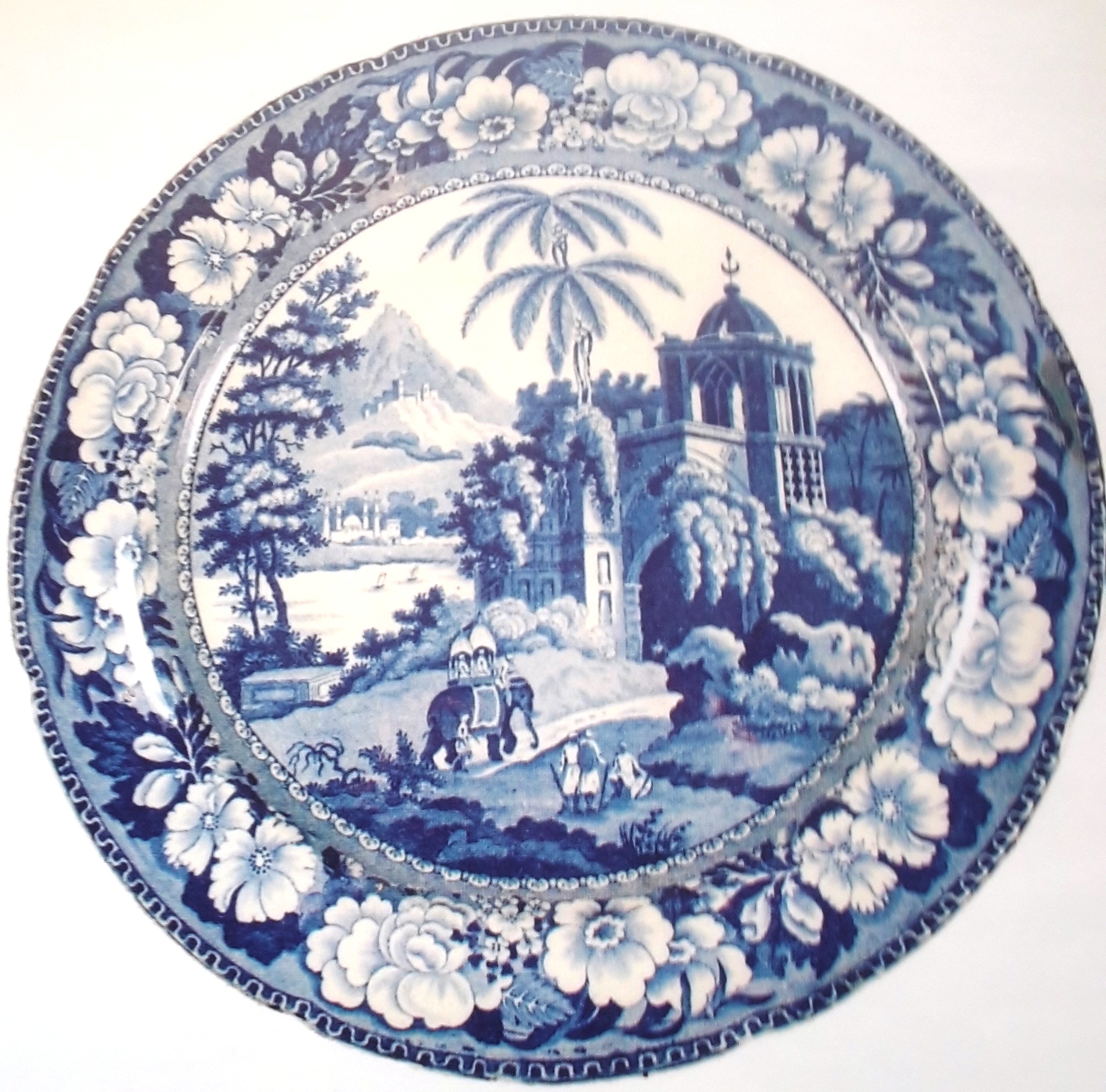
Date :2019-01-21

As part of the growing fascination with the exotic orient, between 1810 - 1842, traditional English potters started transferring aquatints, lithographs or copper or steel engravings of Indian views that appeared as prints or in books from the 1750s. Indian Scenes from these books were adapted as borders or as the central design on traditional English blue and white pottery.
They rarely copied the entire scene unchanged; potters used their imagination by adding figures of people and animals to the scenery, eliminating or reversing sections of prints and even combining elements from several prints in one design. This was especially true while adapting a rectangular print for a circular design on a plate for instance.
Thomas and William Daniells\' Oriental Scenery, considered to be one of the finest illustrated works on India, which combined the picturesque with the real, was a favorite with the English Pottery Manufacturers. The design on this transferware platter is taken from four aquatints of the Oriental Scenery. The main structure is from View in the Fort, Madura (Volume 2, Plate 14). Added elements to this original view of the stone pavilion of the fort include the lush foliage, taken from Ruins at the Ancient City of Gour, the decorated elephant procession from Punj Mahalla Gate, Lucknow and the steep hills in the backdrop from View in the fort of Trichinopoly.